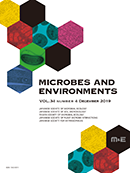Volume 35, Issue 1
Displaying 1-16 of 16 articles from this issue
- |<
- <
- 1
- >
- >|
Research Highlight
-
Article type: Research Highlight
2020Volume 35Issue 1 Article ID: ME3501rh
Published: 2020
Released on J-STAGE: March 20, 2020
Download PDF (340K) Full view HTML
Regular Paper
-
Article type: Regular Paper
2020Volume 35Issue 1 Article ID: ME19086
Published: 2020
Released on J-STAGE: February 27, 2020
Download PDF (1930K) Full view HTML
Regular Paper
-
Article type: Regular Paper
2020Volume 35Issue 1 Article ID: ME19110
Published: 2020
Released on J-STAGE: February 20, 2020
Download PDF (2137K) Full view HTML
Regular Paper
-
Article type: Regular Paper
2020Volume 35Issue 1 Article ID: ME19141
Published: 2020
Released on J-STAGE: February 20, 2020
Download PDF (6012K) Full view HTML
Regular Paper
-
Article type: Regular Paper
2020Volume 35Issue 1 Article ID: ME19128
Published: 2020
Released on J-STAGE: February 08, 2020
Download PDF (1983K) Full view HTML
Short Communication
-
Article type: Short Communication
2020Volume 35Issue 1 Article ID: ME19126
Published: 2020
Released on J-STAGE: February 01, 2020
Download PDF (3805K) Full view HTML
Short Communication
-
Article type: Short Communication
2020Volume 35Issue 1 Article ID: ME19060
Published: 2020
Released on J-STAGE: February 01, 2020
Download PDF (768K) Full view HTML
Regular Paper
-
Article type: Regular Paper
2020Volume 35Issue 1 Article ID: ME19124
Published: 2020
Released on J-STAGE: January 30, 2020
Download PDF (1518K) Full view HTML
Regular Paper
-
Article type: Regular Paper
2020Volume 35Issue 1 Article ID: ME19064
Published: 2020
Released on J-STAGE: January 30, 2020
Download PDF (606K) Full view HTML
Regular Paper
-
Article type: Regular Paper
2020Volume 35Issue 1 Article ID: ME19098
Published: 2020
Released on J-STAGE: January 23, 2020
Download PDF (11230K) Full view HTML
Short Communication
-
Article type: Short Communication
2020Volume 35Issue 1 Article ID: ME19111
Published: 2020
Released on J-STAGE: January 23, 2020
Download PDF (924K) Full view HTML
Regular Paper
-
Article type: Regular Paper
2020Volume 35Issue 1 Article ID: ME19130
Published: 2020
Released on J-STAGE: January 23, 2020
Download PDF (1252K) Full view HTML
Regular Paper
-
Article type: Regular Paper
2020Volume 35Issue 1 Article ID: ME19120
Published: 2020
Released on J-STAGE: January 11, 2020
Download PDF (4591K) Full view HTML
Regular Paper
-
Article type: Regular Paper
2020Volume 35Issue 1 Article ID: ME19103
Published: 2020
Released on J-STAGE: January 11, 2020
Download PDF (1092K) Full view HTML
Short Communication
-
Article type: Short Communication
2020Volume 35Issue 1 Article ID: ME19102
Published: 2020
Released on J-STAGE: January 11, 2020
Download PDF (1667K) Full view HTML
Regular Paper
-
Article type: Regular Paper
2020Volume 35Issue 1 Article ID: ME19070
Published: 2020
Released on J-STAGE: January 11, 2020
Download PDF (766K) Full view HTML
- |<
- <
- 1
- >
- >|
